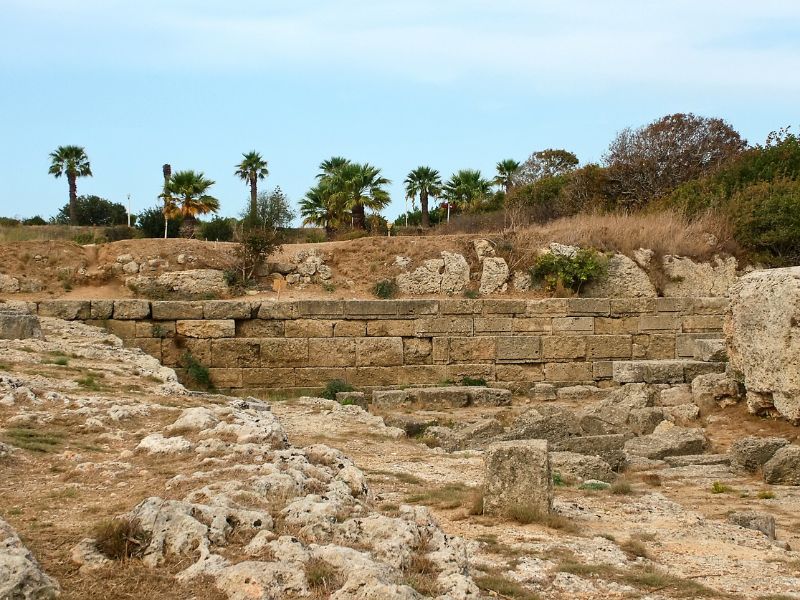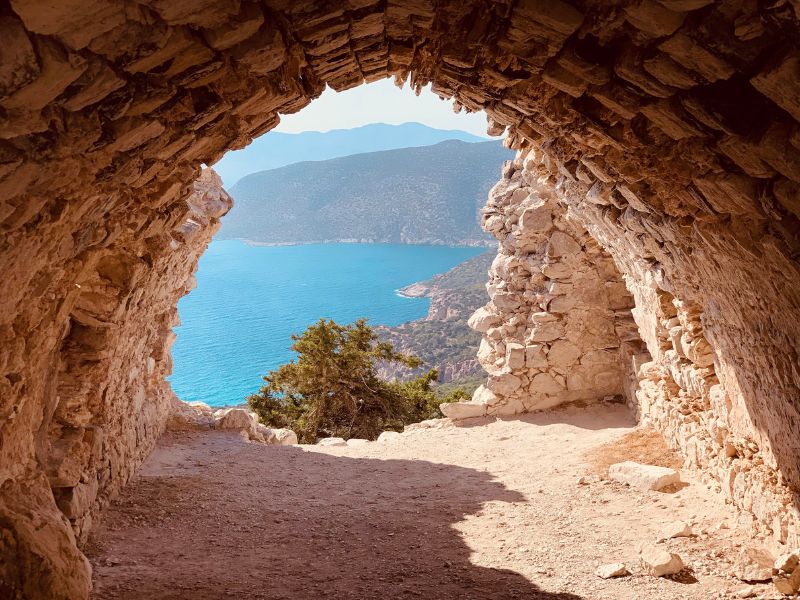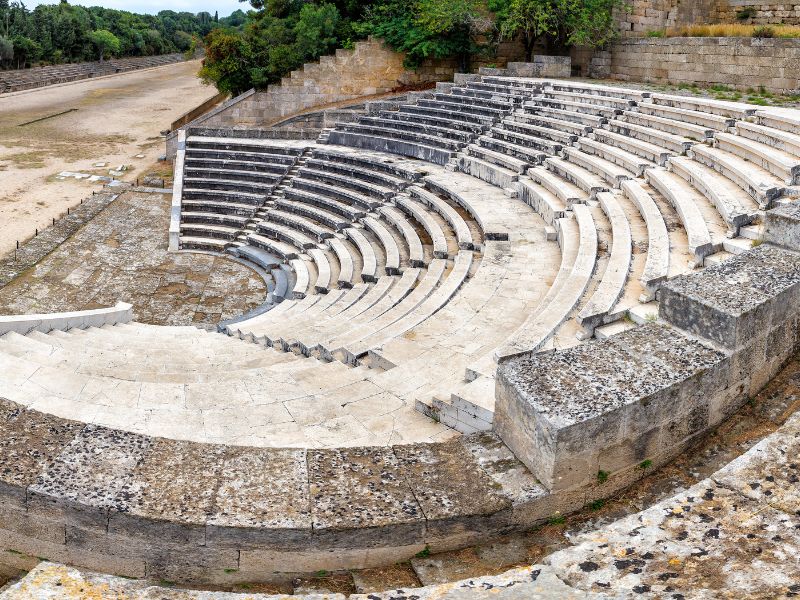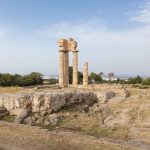
The Halieia Festival of Rhodes: Where Sport Met the Sacred
May 16, 2025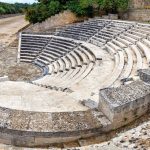
The Odeon of Rhodes: Music, Rhetoric, and the Art of Sound
May 24, 2025Table of Contents
Where Silence Holds the Echo of Applause
Among the terraces of Monte Smith, the ancient stadium of Rhodes lies carved into the hillside, quiet now but still facing the sea as it once did. Its pale tiers of limestone catch the morning light, the same light that once glinted off bronze helmets and oiled skin. Long ago this was no mere sports ground. It was sacred earth, a place where muscle and prayer met beneath the Aegean sky.
Built in the Hellenistic period, the stadium was part of a grand idea — that training the body was another form of honouring the gods. Here, during the Halieia Games, every leap and throw was an offering to Helios, the island’s shining patron. Competition became devotion; movement became music.
Design and Structure

The ancient stadium of Rhodes was engineered with precision and restraint. About two hundred meters long and thirty-five wide, it followed the classic U-shape, ending in the curved sphendone. Some seats were carved straight into the slope, others built from blocks of local limestone, forming an amphitheatre that could hold thousands.
At the eastern end stood the aphesis, the starting gate for footraces. The worn traces of those lanes still mark the ground. Along the side, a single stone throne survives — the proedria, seat of honour for priests or magistrates who watched the games. The design was pure Rhodian clarity: functional, bright, open to the sky. Even the ascent of its steps led the eye upward, suggesting that victory was as much spiritual as physical.
The Stadium and Its Sacred Neighbours
This stadium belonged to a greater conversation of buildings. Just above rose the gymnasium, where young citizens trained body and mind; nearby stood the Odeon for music and rhetoric, and beyond them, the temple of Apollo. Together they shaped a campus of harmony — exercise, art, and worship sharing the same horizon.
The link between gymnasium and stadium echoed Hellenistic education itself. Boys became men through practice, discipline, and respect for the gods. When they later entered the arena for the Halieia Games, they carried that moral training with them. Every contest retold the same lesson: that strength, fairness, and faith belong together.
The Games and Their Rituals

During festival days the stadium stirred with life. Trumpets signalled dawn, priests offered incense to Helios, and the first races began. Athletes ran, wrestled, hurled the discus, or guided horses around the track in chariot contests blazing with dust and sunlight.
Each event was ritual as much as sport. The pounding of feet echoed the path of the sun; the shimmer of sweat was seen as an offering. Victors received olive crowns, but their greater reward was the belief that for a moment they had mirrored the god’s own radiance.
Between events came songs and recitations. Musicians played hymns to Apollo, poets spoke of light and law, reminding the crowd that beauty and order shared the same divine source.
The Atmosphere of the Halieia
Imagine sitting there when the Halieia reached its height: heat trembling above the track, the smell of pine drifting from the hill, and the sea flashing blue beyond the curve of stone. The crowd leaned forward, waiting for the signal. For an instant everything stilled — then the race burst forth, a surge of motion and sound that felt almost cosmic.
The people of Rhodes saw in these moments their own reflection: discipline tempered by joy, reverence expressed through effort. The stadium was both theatre and temple, and each contest a prayer written in movement.
Legacy Beneath the Aegean Sun
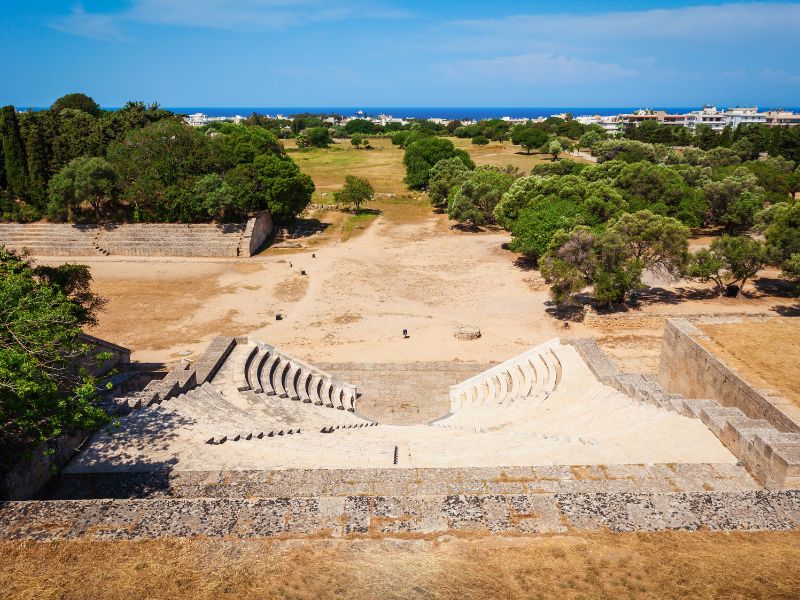
Centuries later the arena endures, its limestone still warm under the same sun. Visitors walk the track, sit on the tiers, and hear the faint echo of applause carried by the wind. The ancient stadium of Rhodes remains a study in proportion and grace — no marble frills, no towering walls, only space, light, and the curve of the hill.
Its survival is a quiet lesson: that for the Rhodians, competition was never conflict but communion. To run, to strive, to excel was to participate in the order of the cosmos. The sunlight that gilded the games still sweeps across the terraces each morning, as if Helios himself returns to inspect his field.
Where Light Still Runs
The ancient stadium of Rhodes was the beating heart of a city that worshipped through movement. Every race and every song sung within its bounds was part of a larger hymn to harmony — between strength and beauty, humanity and the divine.
Stand there today and you can feel it: the rhythm of steps long gone, the hush before a start, the warmth of faith woven into sport. Under the same bright sky that once crowned its champions, the spirit of Rhodes continues to run — steady, luminous, and eternal.
